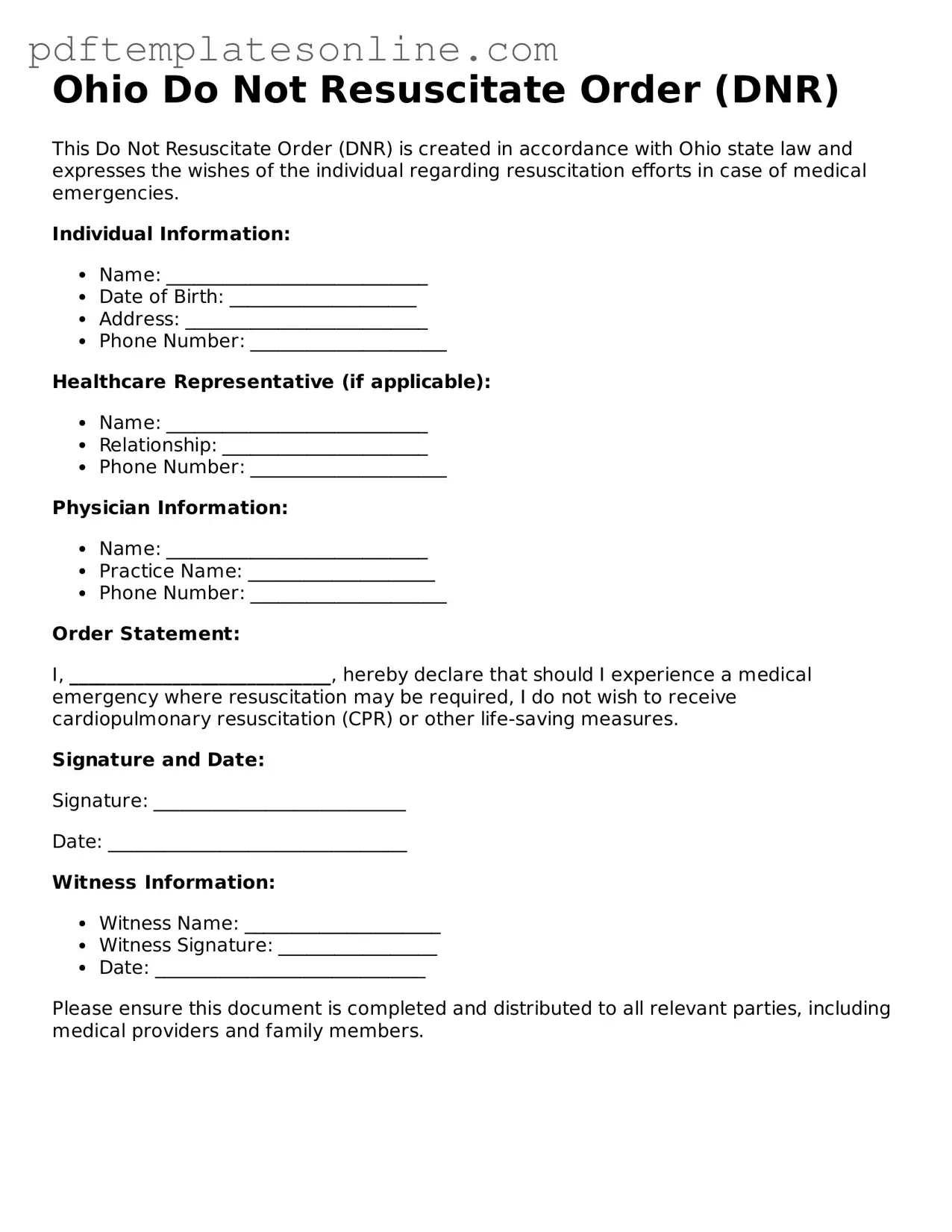When completing the Ohio Do Not Resuscitate (DNR) Order form, individuals often make several common mistakes that can lead to confusion or invalidation of their wishes. One frequent error is failing to provide the necessary signatures. The form requires the signature of the patient or their legal representative. Without this crucial step, the DNR order may not be recognized by medical personnel.
Another mistake involves not including the date on which the DNR order is signed. This date is important as it establishes the validity period of the order. If the date is missing, healthcare providers may question the authenticity of the document, potentially leading to unwanted resuscitation efforts.
Inaccurate or incomplete information about the patient can also create issues. Individuals sometimes overlook the need to provide clear identification details, such as the patient’s full name and date of birth. Inadequate identification can complicate the enforcement of the DNR order in emergency situations.
Additionally, some people neglect to discuss their wishes with family members or healthcare providers before filling out the form. Open communication can help ensure that everyone involved understands the patient's preferences, reducing the likelihood of misunderstandings during critical moments.
Lastly, individuals may not keep copies of the completed DNR order in accessible locations. It is essential to distribute copies to relevant parties, such as family members and healthcare providers. Without easy access to the document, there is a risk that medical personnel may not be aware of the patient's wishes when the time comes.
